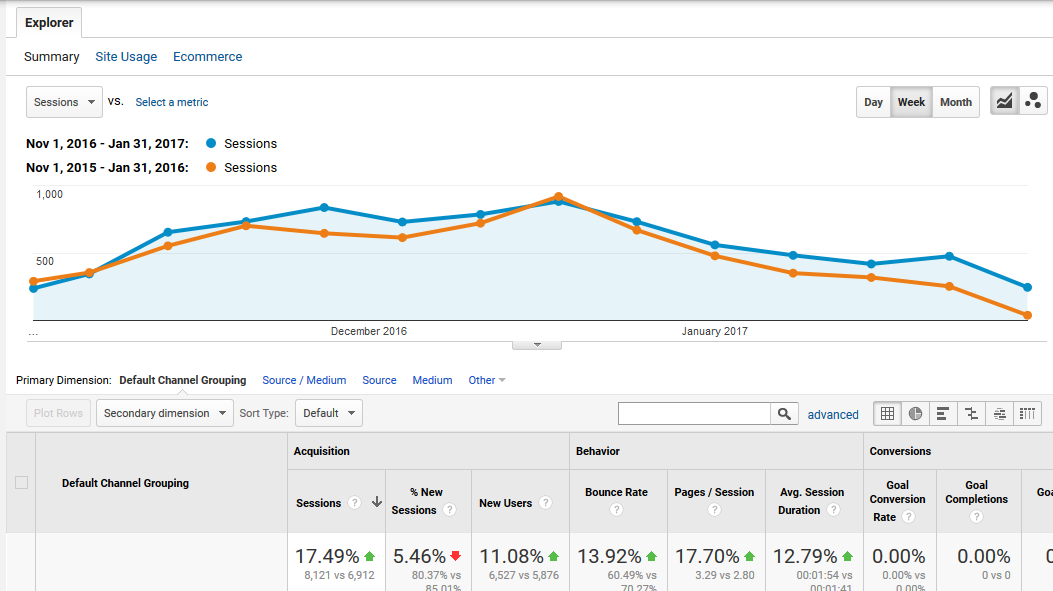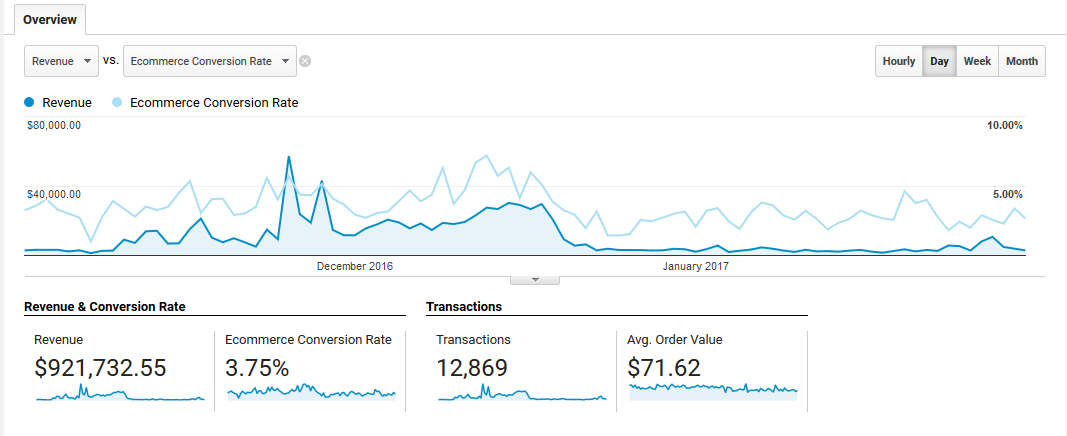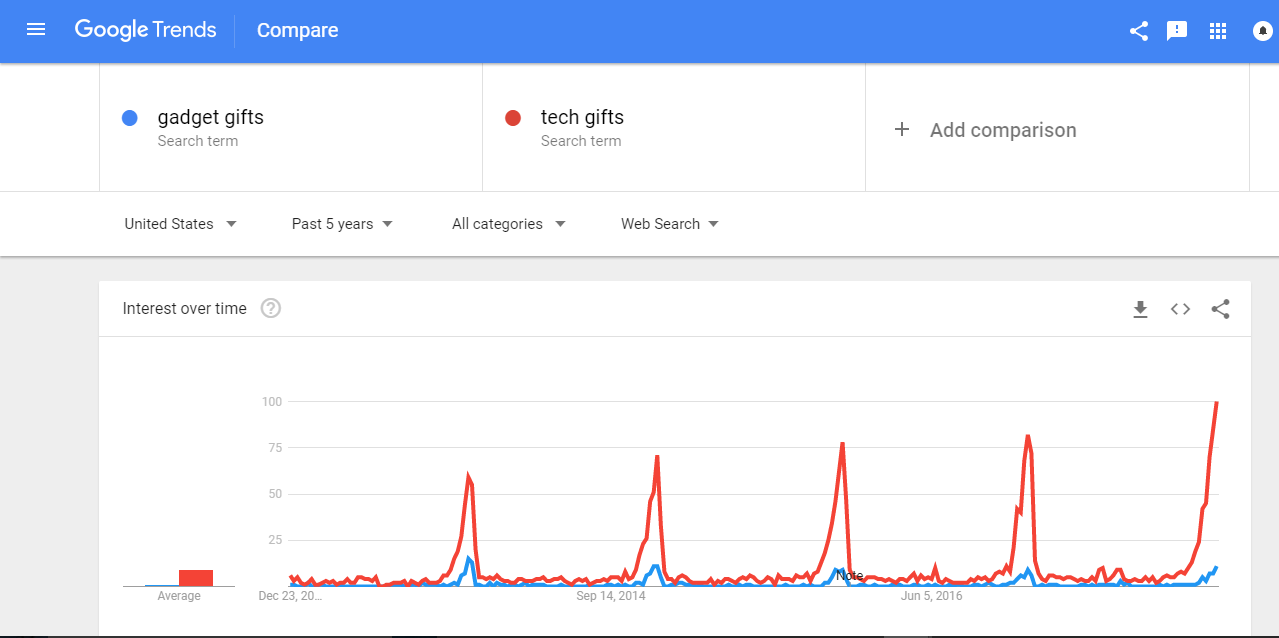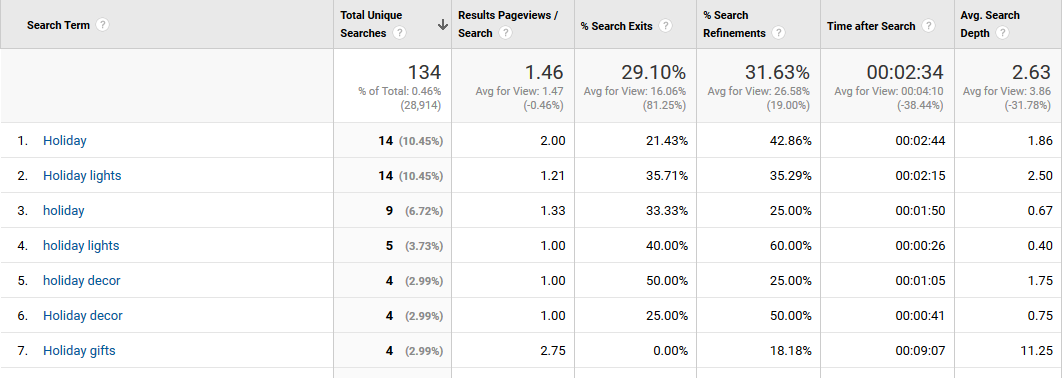Initiatives, Campaigns and Holiday Marketing Spend
First and foremost, it is a good idea to create a fairly comprehensive record of all of your seasonal efforts across channels. For each holiday related effort document details like:
- Channel used: email, PPC, social media
- Nature of the campaign: special promotion, coupon code, seasonal product
- Content included: images, landing pages, messaging
- Budget allocation: How much time and money went into the campaign?
Having a specific record of exactly what was done will allow you to match the analytics intelligence with the precise initiative. This can later be used to cross reference the top performers or underperformers to assess what worked or didn’t work and how can the most effective endeavors be replicated or used in different ways next year.
Traffic and Engagement by Channel
While quarterly reports are fairly standard for most agencies and internal teams, the post-holiday review is more than just the usual Q4 report. The nature of customer behaviors during the holidays can easily warrant a special three-month report that covers November, December, and January. This will capture the lead up to the holidays as well as post-holiday shopping and returns.
In this report, it is important to cover traffic across channels to gauge how well campaigns on email, social and PPC, in particular, succeeded in driving visitors to the site and how those visitors went on to interact with the site.
For example, did holiday-themed social media posts manage to move people from a social platform over to the site and once there did they bounce or did they engage with the content?
Did email marketing campaigns get opened, clicked and result in people applying offers or viewing multiple pages?
When it comes to organic search, what keywords related to holiday needs or gift giving drove clicks during these months? Was there content that matched those queries and satisfied the user intent behind the searches?
With the increase in mobile activity, it’s more important than ever to evaluate traffic breakdowns by device. If most of the traffic on from any channel was on mobile but the strategy for that channel wasn’t necessarily built Mobile-first that should probably be re-evaluated for next season. In general, understanding seasonal user behaviors and metrics as they vary across devices is imperative.
This is the time of year to take a snapshot of where visitors came from and what they did on the site during this seasonal period. Do these behaviors differ from last year, or from other times of year? Identifying differences and answering these questions is crucial for creating an even stronger performance next year.
Conversions and Conversion Rate
While not every on-site action during this time is necessarily related to seasonal needs, when it is viewed through that lens, it may provide context that can inform analysis and future decisions.
We need to look at overall traffic to understand where visitors are coming from and the pathways those users take once they arrive. However, ultimately we’re most interested in whether or not site visitors turned into customers and at what rate.
Marketing tactics don’t really exist in a vacuum and one effort often feeds into another. A TV commercial may have led to an organic search. A radio ad may have created a new follower on Facebook. A paid ad click may have resulted in a new email subscriber. This means that looking at overall conversions and digital sales is a testament to a comprehensive strategy. But it’s still worth delving into each channel to review how well it contributed to completed goals.
Studying how each channel performed in terms of conversions and assisted conversions can help shape how you will allocate resources next year. If email marketing brought in fewer visitors than paid search but those visitors converted at a higher rate, then that channel may deserve a bigger share of next year’s budget. From there you can cross-reference your content with the performance of various campaigns and determine that a certain image, subject line, or product discount correlated with higher conversion rates allowing you to further hone your future strategy.
In conjunction with conversion data, take a close look at shopping cart abandonment. Certainly, issues with cart desertion deserve attention any time of year. But, isolating shopping cart data as it relates to the holiday season focuses on behaviors that occur when consumers are often spending and purchasing more than normal. If people bailed out of the conversion process at a higher or lower rate than other times of the year, that can be valuable to know and examine further.
Search Related Metrics and Insights
Organic and Paid search bring with them specifics regarding visibility that is worth assessing. Search is an important aspect of the user journey from an idea to a final purchase and those who show up frequently near the top have a better chance of getting clicks. So, this begs the question, where did your site fall in the Search Engine Results pages during these months?
In terms of PPC, looking at the number of impressions and the average position that a site showed up at can be enlightening. If these changed or, more specifically, went down compared with earlier months or the months following the holiday season, it may be related to increased competition around the holidays. If that’s the case, but those ads contributed significantly to traffic, conversions or had a high conversion rate, a more aggressive bidding strategy might make sense for next year.
When it comes to Organic search, it’s worth evaluating the site’s rankings during the season. Were there holiday-related keywords that the site ranked for? Is it a result of newly created content? Which pages saw the most clicks as reported form Search Console, do any holiday-related pages stand out in that list? Was there an uptick in clicks related to news, video, or images this season?
The answers to those questions may help illuminate what worked well in terms of achieving rankings and attracting visitors from search. If a “holiday gift guide” never showed up on Google’s ranking radar, consider what can be changed for next year. For example, was the target phrase too broad? If a piece on “Holiday Gifts for Men” didn’t do well, perhaps a more specific target like “Holiday Gift Ideas for Busy Dads” should be on the list for next year.
Also, consider looking at Google Trends to find what people searched for this year and how it compared with last year or the last 5 years, does public interest offer any insights into what my content should be prepared for next year?
While we’re on the subject of search, don’t neglect your internal site search during the holiday season. Take a closer look at what people searched the site for. Were people looking for certain products? Did people look for “Black Friday deals” or gift ideas by relationship or interest? Did people search for coupon codes or deliver information like “return policies” or “order deadlines for Christmas”. These searches provide not only potential ideas for content but they point out that crucial needs and information can be better highlighted on the site.
There are a variety of ways to mine aspects of search data from the holiday time frame to make important and data-based decisions.
Conclusion
Each year, understanding what was successful this holiday season is vital to improving year over year performance. But the key is to isolate and analyze this information in a way that allows you to extract as much intel as possible. From documenting the details of your campaigns to understanding how they drove traffic and conversions, to assessing search performance; these efforts are worth the extra time and attention. For many people this is the most wonderful time of the year, for others, it’s a stressful three-month blur. But for marketers, ‘tis the season to learn and grow.





